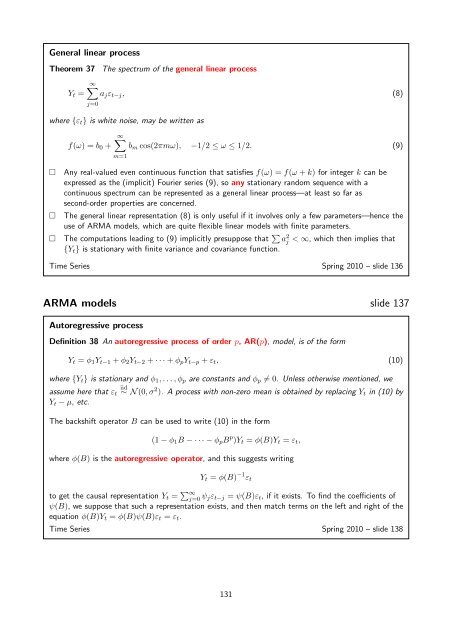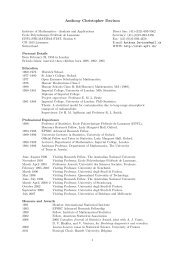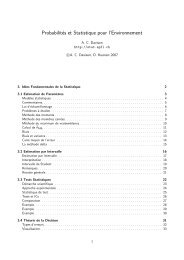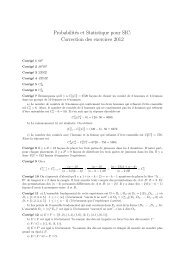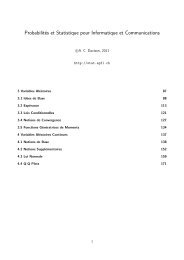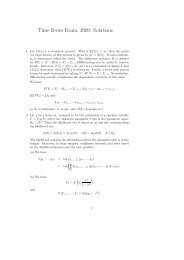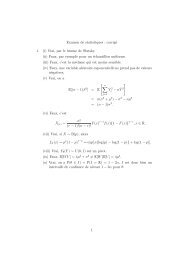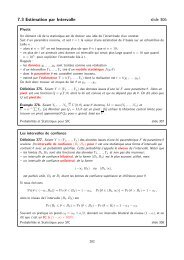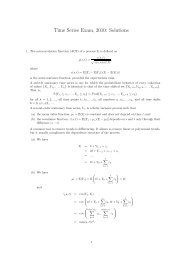Time Series - STAT - EPFL
Time Series - STAT - EPFL
Time Series - STAT - EPFL
You also want an ePaper? Increase the reach of your titles
YUMPU automatically turns print PDFs into web optimized ePapers that Google loves.
General linear process<br />
Theorem 37 The spectrum of the general linear process<br />
Y t =<br />
∞∑<br />
a j ε t−j , (8)<br />
j=0<br />
where {ε t } is white noise, may be written as<br />
f(ω) = b 0 +<br />
∞∑<br />
b m cos(2πmω), −1/2 ≤ ω ≤ 1/2. (9)<br />
m=1<br />
□ Any real-valued even continuous function that satisfies f(ω) = f(ω + k) for integer k can be<br />
expressed as the (implicit) Fourier series (9), so any stationary random sequence with a<br />
continuous spectrum can be represented as a general linear process—at least so far as<br />
second-order properties are concerned.<br />
□ The general linear representation (8) is only useful if it involves only a few parameters—hence the<br />
use of ARMA models, which are quite flexible linear models with finite parameters.<br />
□ The computations leading to (9) implicitly presuppose that ∑ a 2 j < ∞, which then implies that<br />
{Y t } is stationary with finite variance and covariance function.<br />
<strong>Time</strong> <strong>Series</strong> Spring 2010 – slide 136<br />
ARMA models slide 137<br />
Autoregressive process<br />
Definition 38 An autoregressive process of order p, AR(p), model, is of the form<br />
Y t = φ 1 Y t−1 + φ 2 Y t−2 + · · · + φ p Y t−p + ε t , (10)<br />
where {Y t } is stationary and φ 1 ,... ,φ p are constants and φ p ≠ 0. Unless otherwise mentioned, we<br />
iid<br />
assume here that ε t ∼ N(0,σ 2 ). A process with non-zero mean is obtained by replacing Y t in (10) by<br />
Y t − µ, etc.<br />
The backshift operator B can be used to write (10) in the form<br />
(1 − φ 1 B − · · · − φ p B p )Y t = φ(B)Y t = ε t ,<br />
where φ(B) is the autoregressive operator, and this suggests writing<br />
Y t = φ(B) −1 ε t<br />
to get the causal representation Y t = ∑ ∞<br />
j=0 ψ jε t−j = ψ(B)ε t , if it exists. To find the coefficients of<br />
ψ(B), we suppose that such a representation exists, and then match terms on the left and right of the<br />
equation φ(B)Y t = φ(B)ψ(B)ε t = ε t .<br />
<strong>Time</strong> <strong>Series</strong> Spring 2010 – slide 138<br />
131


